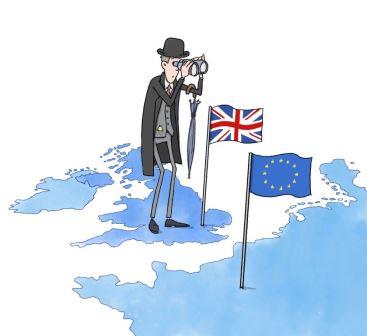The complexity theory argues that in natural systems, resilience increases as the systems become more complex. But for manufactured systems, becoming complicated (like our economy and globalization) means less resilience.
What can this mean? A little broken cog can cause the entire complicated system to seize up or collapse. This summer, we are seeing the following threats to our own complicated US economy – and here are some suggestions on how to weather these storms with risk-adverse investing.
Escalating trade tensions

Look at how the latest trade spats caused a contraction in global trade flows and disruptions to the global supply chains. We have a tentative truce now (as of the start of July), but Beijing has already said all bets are off until all tariffs are removed.
Trump agreed to hold off on new tariffs, but US taxes on $250 billion in Chinese imports and the retaliatory measures they provoked remain in place.
And let’s keep an eye on this tech trade war underway between Japan and South Korea.
South Korea’s president is warning that Japan’s decision to restrict exports to South Korea of materials used in memory chips are a “blow to the economy” and threaten to disrupt global supplies. This dispute can have a ripple effect across the entire hardware sector that depends on chip supplies.
Iran and Nuclear Enrichment
Tehran has started to increase uranium enrichment beyond the purity threshold that had been set in a 2015 agreement that it had signed with the U.S. and five other nations. That pact had been intended to limit Iran’s civilian nuclear program and prevent it from developing nuclear weapons.
Iran exceeded the enrichment levels after Trump withdrew from the deal and re-introduced economic sanctions in 2018. All are signs of more instability in the Middle East, and promise havoc with our oil prices.
Rate cuts
So much uncertainty! At this point, it does look like a rate cut is in the cards for July. But will the Fed disappoint by signaling that this is just an ‘insurance’ cut? This is a big risk – moving too slow at a time when inflation data are so muted.
What Happens to the Federal Reserve Board?
Trump has threatened to fire or demote the Reserve chairman Jay Powell. This raises more worries about how the entire committee would react to this capriciousness.
Don’t forget – Powell is just one vote. A powerful one, to be sure, but it’s still one vote.
It is a whole committee. What if the whole FOMC decides to resign? What if Jarad Kushner becomes the next Fed Chairman, or worse – Larry Kudlow? This is a serious risk – that Arthur Laffer could compare monetary and fiscal policy is absolutely incredible. It’s like comparing a cactus to a hot dog. Gold will surge if anything happens on this front, but Donald Trump will get the weak dollar he so desperately covets.
Brexit is Coming … or no-deal?

A no-deal Brexit is a big concern – and whoever leads the Conservatives, that seems to be a rising prospect of concern as well. The October 31st deadline is not that far away.
2020 Election and Stock Market Trends
At this point, while the President remains wildly popular among his base, his approval rating is a dismal 40%. And this is coming off the peak of the economic expansion, and stock market, and the low in the unemployment rate. Meanwhile, the only reason we have such a wide field of Democratic candidates is because they each smell a huge opportunity. Yet the vast majority of these candidates is left-of-center and the only centrist is seen as too old and gaffe-prone to make the cut.
Pullback in Capital Spending
Never mind the trade frictions with China, if you are a U.S. business today all you see are these Democrats threatening to roll back at least one of the corporate tax cuts. So, what do you do? Wait and see what happens, which means cash gets built up on the balance sheet instead of being deployed into the economy. The surge in the NFIB ‘uncertainty’ index in June, and commensurate pullback in capital spending and business expansion plans, spoke volumes in that respect.
And Now What? Be Nimble with Risk-Adverse Investing.
Amid all this uncertainty – look for a strategy that gives you the most flexibility and a focus on risk-adjusted returns. Our flagship strategy, Stableford 50 Plus, shortens the investment time horizon and asset-allocations, while providing lower risk levels for your monies. Nimbleness is the key here…. To learn more contact Stableford by calling 480.493.2300, or contact us online.
